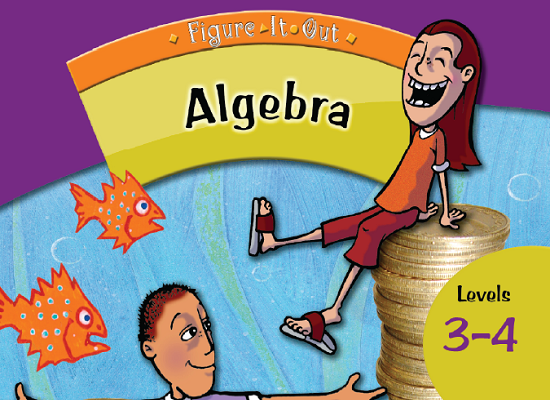Cup capers
This is a level 3 algebra activity from the Figure It Out series. It is focused on writing equations and using letter symbols. A PDF of the student activity is included.

About this resource
Figure It Out is a series of 80 books published between 1999 and 2009 to support teaching and learning in New Zealand classrooms.
This resource provides the teachers' notes and answers for one activity from the Figure It Out series. A printable PDF of the student activity can be downloaded from the materials that come with this resource.
Specific learning outcomes:
- Write equations using letter symbols.
Cup capers
Achievement objectives
NA3-6: Record and interpret additive and simple multiplicative strategies, using words, diagrams, and symbols, with an understanding of equality.
Required materials
- plastic cups
- multilink cubes
- Figure It Out, Level 3-4, Theme: Algebra, "Cup capers", page 22
See Materials that come with this resource to download:
- Cup capers activity (.pdf)
Activity
This activity introduces students to working with variables. Using cups that can be filled to represent unknowns helps the students to understand that letters in algebraic equations are variables rather than fixed numbers.
The students can answer question 1 using logical reasoning. Two yellow cups hold the same as one blue cup. So:
- 2 yellow cups + 1 blue cup = 1 blue cup + 1 blue cup = 2 blue cups
This means that two blue cups would hold 12 cubes. In that case, one blue cup holds 12 ÷ 2 = 6 cubes. And that means that the two yellow cups hold six cubes, so they must hold three cubes each.
Question 2 is more complex.
Condition 1: There are 25 cubes altogether.
Condition 2: There are two cubes outside the cups.

Condition 3: Each red cup has one more cube in it than the green cup.
So if one extra cube were put in the green cup, there would be four equal cups, which would give a total of 24 cubes. Each red cup must hold 24 ÷ 4 = 6 cubes and the green cup holds 6 – 1 = 5.

Question 3 reinforces the students’ understanding that letters are variables rather than fixed numbers.
In question 4, confined values have been given for each letter (or cup). This gives the students practice in solving symbolic equations with certain values for the variables, and it also provides an opportunity to discuss equivalent symbolic expressions. For example, the students will find that both collection iii and collection v have 20 cubes. You could vary the number of cubes in each cup and calculate the number of cubes. Collections iii and v will still be equivalent. You could ask the students to explain why this is.
Their explanations for question 4b should include the following points:
- Collection iii can be described as 2y + 2b + 2y + r.
- Altogether, there are four yellow cups, so iii can also be described as 4y + 2b + r.
- Collection v can be described as r + 4y + 2b.
- Addition is commutative, so the order of the addends does not matter. So collection v can also be described as 4y + 2b + r, which is the same as collection iii.
1.
3 in each yellow cup and 6 in the blue cup
2.
5
3.
i. 2b + r
ii. 3g + 2y
iii. 4y + 2b + r
iv. 4r + 2y + b
v. 4y + 2b + r
4.
a.
i. 8
ii. 21
iii. 20
iv. 24
v. 20
b. Because they both have the same number of each coloured cup, even though they are shown in a different order.
The quality of the images on this page may vary depending on the device you.


